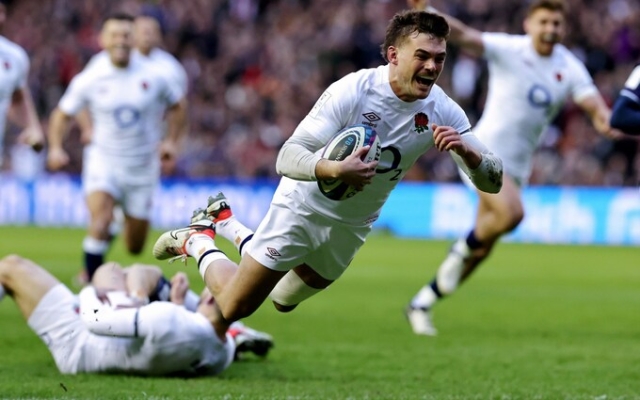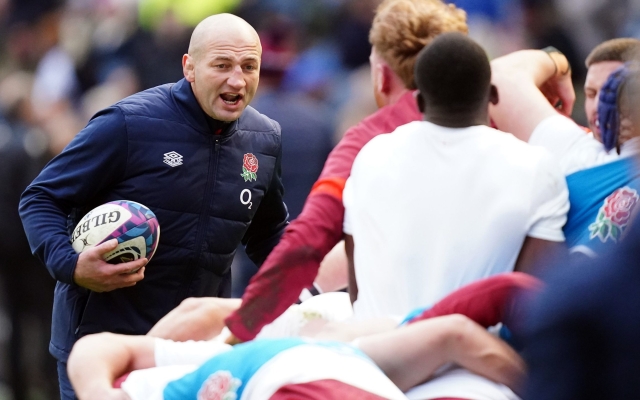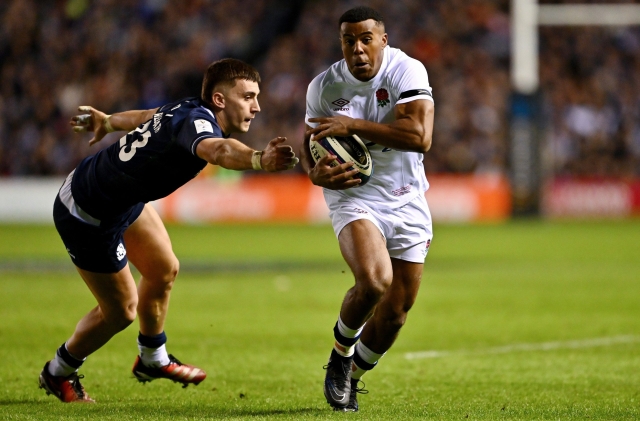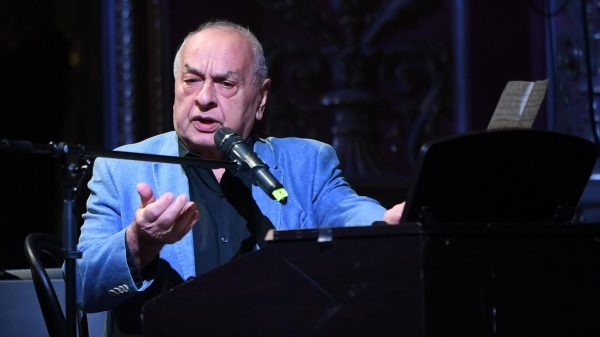 George Furbank's try proved that whatever England do as a collective works. Photo: David Rogers/Getty Images
George Furbank's try proved that whatever England do as a collective works. Photo: David Rogers/Getty Images
By standards it wasn't a Calcutta Cup classic, but it was everything we could have hoped for in terms of compelling storytelling and gripping drama. Both teams were full of attacking intent and it was a thrilling spectacle, although mostly due to the number of times the players made mistakes or turned the ball over.
At times, especially in the first half, it was almost more valuable not to have the ball in attack than to actually have the ball. With the exception of two superb tries in the first phase of the scrum, most of the best attacking chances (in the first half, of course) came from passing the ball or counter-attacks. Duhan van der Merwe's two hat-tricks came in this manner, with the second, his first, being the result of a signature Scottish set-piece.
The key word is intention. Scotland have had this for some time — attack is Scotland's first thought — but Saturday at Murrayfield was the first time we saw England's real attacking intentions in the first phase of the Steve Borthwick era, and perhaps even before. There were plenty of mistakes, with both sides struggling to string stages together, but tries from George Furbank and Immanuel Fahey-Waboso proved that what England do as a collective works. However, the same cannot be said for their individual precision, which undermined their cause and also hampered the Scots in the first half.
But there was progress on England's part. The intent was clear with Borthwick clearly looking to expand England's attack from the set-piece, which was a glaring hole in their arsenal. Much of their set work over the last two or three seasons has focused solely on kicking or territory. Things were a little chaotic at Murrayfield — including from the Scots — but both sides showed a willingness to attack when the ball was turned over, which was often. England may regret not increasing that figure later in the game when they still needed two points to win.
 Steve Borthwick's work in expanding England's attacking threat from set pieces was evident. Photo: Jane Barlow/Wire PA
Steve Borthwick's work in expanding England's attacking threat from set pieces was evident. Photo: Jane Barlow/Wire PA
Mistakes aside, individually Scotland had a higher threat level to carry out this intention. Van der Merwe has developed into a world-class striker, but he also has Cameron Redpath, Huw Jones, Kyle Stein, Blair Kinghorn and, while he is fit, Sione Tuipulotu capable of beating a defender one-on-one. England's play in the first phase of the game (this part can be rehearsed in training) looked great for the starting team, but it was telling that their possession of the ball in the phase of play improved with the arrival of the Cavalry.
Fahey-Waboso looked lethal when he came on, with a superb ruck angle dazzling Scotland, leading to his try. Every time he touched the ball, the first tackler either fell on top of him or clung to the ball every time. Once the nectar attracts the protective bees, a spot appears somewhere else; this adds psychological pressure to the defense because they become preoccupied with individuals. I want Exeter to have more playing time. For the same reason, I'd stick with Ollie Lawrence in midfield even if he had to struggle against Scotland. Fin Smith has impressed on the bench and I would like to see him, like Fahey-Waboso, given more minutes and maybe a start.
The next stage for England is to get their forwards to work even harder off the ball by getting two or three more players into that outside 20-metre channel. This way, if they are at the forefront, they will still be able to play with numbers after two passes. At the moment there is only one player left. Even if Lawrence's errant pass ended up in the hands of Ben Earl, there was still no overlap to exploit. Scotland were still on the defensive. But both England's attempts were positive. This is progress.
 Immanuel Fahey-Waboso (right) passes Cameron Redpath to score. Photo: Dan Mullan/Getty Image
Immanuel Fahey-Waboso (right) passes Cameron Redpath to score. Photo: Dan Mullan/Getty Image
In the second half, both teams stepped up their game, trying to establish some control — both over the territory and over possession of the ball. Scotland managed to do this half astutely. Finn Russell is currently at the top of his game and has improved his game management significantly. Co-captainship seems to have strengthened him and added maturity. France's lessons were learned and Scotland took the three points when it mattered. Games in this championship will always be intense, so collect points as they come. Gregor Townsend, the head coach, will be very pleased with the way Russell handled the game, while maintaining X-factor elements such as the cross-field strike and Van der Merwe's hat-trick.
Can any of these two teams to disrupt the second Grand Slam tournament in a row in Ireland? I'm not sure. Ireland remain a level ahead simply due to the organization and speed of their play in phase. They keep the ball and force them to work hard on defense.
This will be key for Scotland because they almost always pick up the points. They scored 30 points at Murrayfield against England's vaunted blitz. When it matters, Townsend's side will have to put in a great defensive performance against Ireland. Scotland defended well against England for large periods of time and achieved equality at set pieces. Scotland will believe in Dublin, but Ireland will naturally be clear favourites.
As for Ireland, England remains a work in progress. They will have to use this improved attack in the first phase against Ireland because creating front foot momentum early is crucial — it brings the players in possession into the game. Many fans may think this is a step back for England and defeat to Scotland will hurt, but the overall effort and youthful dynamism proved that all hope is not lost.






















































Свежие комментарии